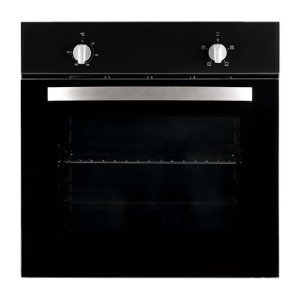When it concerns kitchen devices, couple of products are as necessary as an oven. Whether you're an avid baker, a weekend chef, or someone who merely wants to heat up leftovers, the best oven can make all the distinction in food preparation and cooking. Amongst the various types of ovens readily available in the market, single ovens stand apart for their adaptability and area effectiveness. This article will direct you through the important considerations when buying a single oven, laying out key functions, types, and answering frequently asked concerns.
Single ovens, as the name suggests, consist of one cooking cavity. They are created to manage different cooking jobs, including baking, roasting, grilling, and broiling. Suitable for compact cooking areas or those who do not require the additional area used by double ovens, single ovens can be built into cabinets or stand alone.
Single modern ovens come in various types, each offering distinct advantages. Here are the primary types to consider:
| Type | Description |
|---|---|
| Traditional | Makes use of leading and bottom heating elements for traditional cooking designs. |
| Convection | Employs a fan to distribute hot air, resulting in even cooking temperatures. |
| Wall Ovens | Built into the wall for space-saving style while remaining user-friendly. |
| Steam Ovens | Introduces steam for wet cooking, outstanding for baking and reheating. |
| Microwave Ovens | Integrates cooking and reheating functionalities with microwave innovation. |
When searching for a single oven, it's crucial to evaluate various functions that can enhance cooking experience and effectiveness. Below are some important credit to think about:
Size and Capacity:
Energy Efficiency:
Oven Types:
Control board:
Self-Cleaning Functionality:
Extra Features:
When purchasing an oven, it is smart to consider brands understood for their dependability and quality. A few of the prominent brands in the market consist of:
Follow this structured process to streamline your buying choice:
Determine Your Cooking Needs:
Set a Budget:
Research study Online:

Check out Showrooms:
Request Expert Advice:
Compare Warranty Options:
Conventional ovens utilize leading and bottom heat sources for cooking, while stove use a fan to circulate hot air, leading to quicker and more even cooking.
While some homeowners pick to install their ovens, it's generally recommended to work with a professional to ensure safety and compliance with local structure codes.
Frequency depends on usage. A self-cleaning oven can greatly lower the frequency, while manual cleansing must ideally be carried out seasonally if utilized routinely.
Search for features such as a timer, hold-up start, and extra cooking modes like air fry or steam for improved functionality.
The choice between gas and electric depends mostly on individual preference. Gas offers immediate heat and is typically preferred by professional chefs, while electric ovens typically offer more constant cooking temperature levels.

Buying a single oven can elevate your cooking experience, leading the way for more enjoyable meal preparation and imagination in the kitchen. As you buy the perfect oven, consider your cooking routines, the oven's functions, and your readily available cooking area. Take your time to explore various alternatives, and by following the assistance supplied in this post, you can make an informed choice that meets both your culinary requirements and budget plan requirements.
In summary, the ideal single oven will not only boost your cooking effectiveness but likewise make your kitchen a more satisfying space for culinary expedition. Happy cooking!